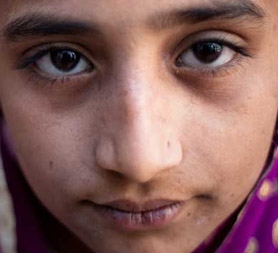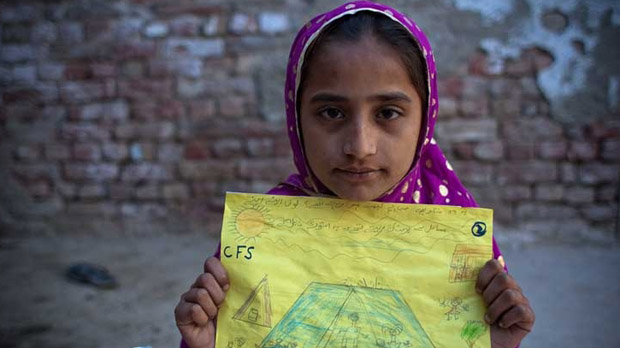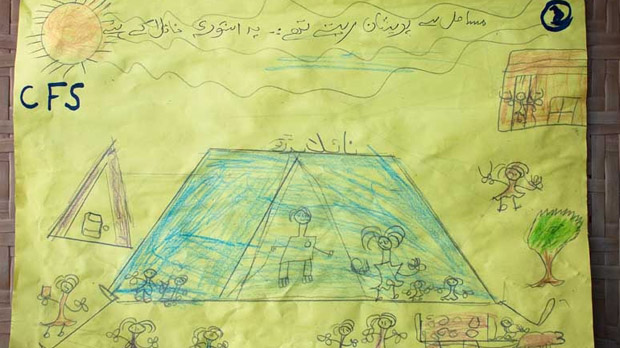Pakistan: a child’s story 6 months after the floods
Six months since devastating floods hit Pakistan, thousands continue to rebuild their lives – many children. Naila Buriro, just 10, describes how a Save the Children project is helping her recovery.

Naila is 10 and lives in Mirpur Buriro village in Tehsil Thul, Jacobabad, Sindh province, which was badly affected by last year’s Pakistan floods. She has three brothers and five sisters. Naila and her family had a lucky escape when the floods hit her village last year. This year she and her parents are trying to rebuild their lives.
We heard about the floods through announcements on loud speakers at the local mosque and people from our village also kept warning us about the floods. The first thing that came into my mind was “Oh my God we are all going to die”, but luckily we left the village two days before the floods hit there. We fled and tried to carry as much as we could; some clothes, some food and our chickens. We had to leave everything else behind. We don’t have a car and we had to walk a long way before getting on a bus to Hyderabad.
I faced the worst days of my life after the flood.
I faced the worst days of my life after the flood. We moved to the city of Hyderabad, to my sister’s house, she lives there with her husband and has a very small home and our family is very big so we could not stay there for long. We moved again to a relief camp close to her house. Those were the worst days I’ve had so far.
Channel 4 News special report – Pakistan floods
It was horrible being away from home with no food and no friends. Since I have returned home and can play in a safe place, I have almost forgotten all the bad memories I was carrying in my mind of the floods. I’m going to lessons and can study once again and I have a safe place to play and I feel much happier.

We came back to our village a few days after the festival of Eid in October 2010. But we could not celebrate because we did not have any new clothes. This was the first Eid that I can remember when our parents didn’t give us gifts. We did not celebrate this year. How could we? We didn’t even have a home.
In our village the flood water was higher than me, so you can imagine what it was like. We lost most of our things because we couldn’t carry all of our belongings with us to Hyderabad and when we came back, everything was either washed away or ruined by the water and mud.
Our house was destroyed along with everything we left behind. We can’t afford to build a new house or buy new furniture.

I’ve been taking part in the art therapy and I chose to draw a picture of the camp we were staying in because I have experienced life in a camp. When I was living in the camp in Hyderabad, the behaviour of people was very bad. They used to tease poor people and women. I did not like the environment of that camp, it really annoyed me. I was also really scared thinking that the floods would come again and couldnt sleep at night.
I’ve been taking part in the art therapy and I chose to draw a picture of the camp we were staying in because I have experienced life in a camp.
I like going to the safe areas set up by Save the Children, I enjoy my time there. Sometimes I want to study and play for the whole day and I would like to play at the weekend too because I get bored at home. We have nothing to do at home, so we are always talking about the games we play and the books we read in the safe play areas.
The thing I like the most about the play area is that we can continue our education and we can play together. And I like the teacher there, she loves me a lot.
Since the floods, Save the Children has established 174 safe play areas for children in the worst-hit places and more than 130,308 children have benefited from vital emotional support through art therapy, group counseling and play activities.
Children are also being taught how to deal with daily life while living in camps.
With up to seven million people still displaced, the floods were one of the biggest disasters to hit a country this century and affected more people than the Kashmir earthquake (2005), Hurricane Katrina (USA 2005), Cyclone Nargis (Myanmar 2008), the Indian Ocean tsunami (2004), and the Haiti earthquake (2010) combined.